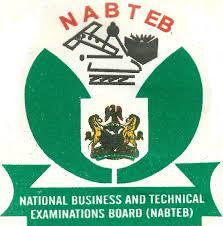NABTEB 2018 BIOLOGY PRACTICAL ANSWER EXPO
NABTEB BIOLOGY PRACTICAL
(1a) Chloroplast aids the manufacture of food (photosynthesis in green plants
(1b) mitochondria is the site for respiration ie it helps to break down food into simple sugar
(1ii)
(i) Prophase
(ii) Metaphase
(iii) Anaphase
(iv) Telophase
(1iii) viruses are regarded as non-living organisms because they are inert outside the host body.
(1iv) PICK TWO
(i) Tongue
(ii) Noise
(iii) Eye
(iv) Skin
(v) Ear
(1v) PICK TWO
(i) Kidney
(ii) Lungs
(iii) Skin
(iv) Liver
(1vi) PICK TWO
(i) Hyper myopia (long-sightedness)
(ii) Myopia (short sightedness )
(iii) Presbyopia
(iv) Astigmatism
(1b) PICK ONE
(i) Night blindness
(ii) Reduced resistance to diseases
(1vii) PICK ONE
(i) Cowpea
(ii) Groundnut
(iii) Melon
(1viii)
– xylem: it helps to conduct water and dissolved mineral salt from the roots to the leaves. – Phloem: it helps in storage of food
(1ix)
(a) Diploid number of cells (2 offspring)
(b) Haploid number of cells (4 offspring)
(1x)
– Tadpole ==> kidney
– Catfish ==> kidney
(1xi)
– Incomplete metamorphosis
– Complete metamorphosis
(1xii)
(a) Baobab tree ==> arid area (terrestrial)
(b) Rock mangrove tree ==> estuarine
(1xiii)
(a) White blood cell: it helps to defend the body against disease by ingesting the bacteria and virus that causes disease
(b) Red blood: it helps to transport oxygen from the lungs to the body cells
(1xiv)
(a) Sweat gland: it helps to remove sweat from the body
(b) Blood plasma: it helps to transport the substances that are dissolved in it as well as the cells that float in it.
(1xv) PICK TWO
(i) Fossil records
(ii) Evidence from comparative anatomy
(iii) Evidence from geographical distribution
(iv) Evidence from embryology
(v) Evidence from vestigial organs
(2)
A ==> bean seed
B ==> maize grain
D ==> tilapia fish
(2ii)
C ==> terrestrial habitat
D ==> aquatic habitat
(2iii)
A ==> explosive mechanism
B ==> wind
(2b) DRAW THE DIAGRAM
(3a)
E ==> butterfly
F ==> grasshopper
G ==> cockroach
H ==> housefly
(3ii)
E ==> it aids pollination
F ==> it destroy leaves of plants
G ==> it helps in the spread of disease
H ==> it helps in the decomposition of substance
(3iii)
E ==> sand dunes
F ==> leaves of plants
G ==> dark cupboard
H ==> manure and decomposing material
(3b) TABULATE
Specimen: | E | F | G | H |
Class: |insecta | insect | insect | insect|
Phylum: | Arthropoda | | Arthropoda | | Arthropoda | | Arthropoda |
(4ai)
A ==> net venation
B ==> parallel venation
(4aii)
– SPECIMEN C
(i) presence of dry skin covered with scales
(ii) presence of hind and fore limbs for locomotion
(iii) presence of buccal cavity for feeding
(4aiii)
SPECIMEN D
(i) Presence of scale on skins
(ii) Presence of lateral lines
(iii) Presence of fins for movement
(iv) Fore limbs and hind limbs for movement
(v) Mouth for feeding
(vi) Lateral for detecting of vibration
(4b)
TABUALTE
Specimen: | Economic importance | type
E | aids pollination | complete
F | destroys leaves | incomplete
G | spreads disease | incomplete
H | decoys of substance | complete
(5a)
TABULATE
S/N | Ecological Instrument | Use|
1 | thermometer | to measure temperature
2 | hygrometer | to measure relative humidity
3 | barometer | to measure pressure
4 | pooter | collection of insect
5 | Quadrant | to study plants population
6| rainguage | to measure amount of rainfall
(5b)
PICK THREE
BIOTIC FACTOR
(i) Competition
(ii) Parasitism
(iii) Predation
(iv) Pathogens
(v) Mortality
(vi) Migration
(vii) Food
ABIOTIC FACTORS
PICK THREE
(i) Edaphic factors
(ii) Chemical factors
(iii) Climatic factors
(iv) Topographic factors
(5c) Grass ==> Rat ==> Snake.


